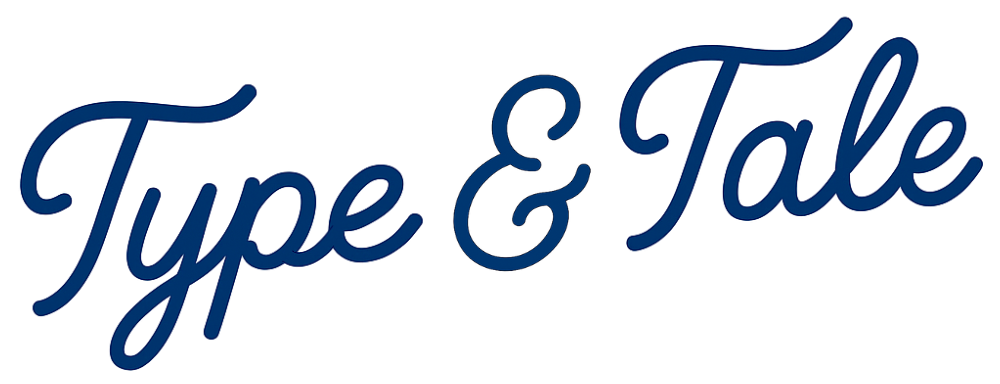What does it mean to use “story” in marketing?
“Story marketing” and “story” within the context of marketing have become buzzwords. But what does it mean to use story within your marketing?
That’s what I am going to set out to explain in this blog post.
What is story?
From the beginning of time, story has been the telling of a journey. A tale of transformation.
Within the content of marketing, story is a guided journey. A customer faces a problem. Your brand plays the guide. You offer a plan. They take action. Life gets better. That’s it.
Why does it matter: Because people don’t remember feature lists. They remember change. Story shows the change.
Why story works
Stories work because they turn scattered facts into a simple, visual journey. Open with the “why” so readers feel the stakes before you show the steps.
Brains like order. A clear beginning–middle–end reduces mental load.
We feel before we think. Emotion opens the door; proof closes it.
Stories travel. A good story is easy to retell, share, and cite.
Snippet-ready: Story lowers friction and raises trust. Trust drives action.
The Effective Stories System (7 components)
The Effective Stories System (ESS) is Type & Tale’s take on the classic hero’s journey. We developed it to be used on any asset — an ad, email, deck, or site. It blends classic narrative arcs with modern marketing.
I’ll walk you through each of the 7 components and then show you how to practically use them.
1) AUDIENCE IDENTITY
Define who you serve. In two tight lines, capture identity signals so your copy mirrors their language and context.
Who is your audience?
What do they aspire to, fear, or believe?
What’s their current world (pain, need, desire)?
Purpose: Centers the customer as the hero. Emotional intelligence comes first.
Example (B2B SaaS): “You lead a RevOps team. You want steady growth, but churn and long cycles block you.”
2) INCITING SHIFT
Name what changed in the world. Start with the moment the ground moved so urgency feels obvious, not forced.
What shifted in tech, culture, or expectations?
What is now possible that wasn’t before?
Show Before vs. After with dramatic contrast.
Purpose: Sparks urgency and introduces a problem worth solving.
Example: “AI touches every step of the funnel. Buyers expect value fast. Teams that adapt win.”
3) THE STRUGGLE
Make the conflict plain. Call out the friction and cost of waiting so the next step feels rational and necessary.
What blocks progress?
Why hasn’t the hero (audience) succeeded yet?
What’s at stake if they don’t act?
Purpose: Deepens the tension; primes for emotional payoff.
Example: “Demos land and deals look good, but momentum stalls, therefore pipeline slips and churn grows.”
4) BRAND = THE GUIDE
Lead with purpose, then proof. People choose guides they trust—declare what you stand for, then show receipts.
Share your Why, values, and worldview.
Offer a clear belief or promise that resonates.
Use mini-stories (social proof, use cases, testimonials) to earn trust.
Purpose: You’re not the hero. You’re the guide who earns the right to lead.
Example: “We believe onboarding decides retention. We’ve helped 300 teams cut churn with a 14‑day pilot.”
5) THE PLAN / SOLUTION
Make success feel easy. Reduce cognitive load with a short path and vivid outcomes.
Offer a clear path: 3 steps, or 1 big move.
Tie your product/service to real outcomes.
Show the frictionless journey from problem → success.
Purpose: Removes hesitation. Visualizes transformation.
Example: “Book a call → Launch pilot → Scale if it works.”
6) THE TRANSFORMATION
Show the before/after. Paint the senses so readers can picture themselves on the other side of the problem.
What does success look like, feel like, sound like?
Share the reveal: “Until finally…”
Purpose: Celebrates the hero’s journey. Reinforces brand loyalty.
Example: “Close rates up 21% in 60 days. CS team sleeps better. Finance smiles.”
7) THE CALL TO JOIN
Invite action. Give one next step that’s small, safe, and specific.
What step lets the audience enter the new story?
Invite them into a community, belief, or transformation.
Keep CTAs consistent, but adapt per channel.
Purpose: Convert attention into alignment—and action.
Examples: “Start your pilot.” “Join the workshop.” “Get the playbook.”
Turn the system into copy
Translate the seven parts into plain, skimmable messaging. Keep the promise tight and the path obvious.
Headline: Name the win, not the widget.
“Cut churn 21% in 60 days.”Subhead: State the plan in a sentence.
“Book a call. Launch a pilot. See the lift.”CTA: One button. One verb.
“Start my pilot.”Body: Audience → Shift → Struggle → Guide → Plan → Proof → CTA → Transformation.
Snippet-ready: One page. One path. One promise.
Real examples (quick builds)
Ground the framework in formats your team ships daily. Use these skeletons to draft fast and iterate.
30‑second video ad
Hook the shift (3s): “AI changed buyer behavior.”
Name the struggle (4s): “Demos land. Deals stall.”
Guide + plan (10s): “14‑day pilot to fix handoffs.”
Proof (7s): “21% lift, 300+ teams.”
CTA (6s): “Start your pilot today.”
Landing page hero
Headline: “Close more deals in 60 days.”
Subhead: “Book a call → Launch pilot → Scale”
CTA: “Start my pilot”
Trust row: 5 logos + 1 stat.
Sales email (plain‑text) Subject: The shift is here
Body:
“AI raised the bar for speed. Many teams still stall after the demo.
Here’s a 3‑step pilot that cut churn 21% for teams like yours:
20‑minute audit 2) 14‑day pilot 3) Scale if it works.
Worth a try? —Alex”
Case study (before/after)
Before: “38% churn, 45‑day cycle.”
After: “17% churn, 31‑day cycle.”
How: “New onboarding + weekly success calls.”
Do / Don’t checklist
Use this as a pre‑publish gate. If an item fails here, fix it before you ship.
Do
Speak to one person.
Use short words and short lines.
Show the plan in 3 steps.
Prove it with numbers.
End every section with an action.
Don’t
Make yourself the hero.
List ten CTAs.
Bury the plan.
Lead with jargon.
Tell a story with no change.
Fill‑in‑the‑blank template (Effective Stories System)
Copy this into any brief or doc. Fill it top‑to‑bottom in one sitting; refine later.
Audience Identity: “You’re a [role] who wants [goal] but faces [pain/need/desire].”
Inciting Shift: “The world changed: [shift]. Now [new expectation/possibility].”
Struggle: “You tried [attempt], and you care, but [obstacle], therefore [stakes].”
Brand = Guide: “We believe [why]. We’ve helped [N] [peer group] with [mini‑proof].”
Plan / Solution: “Here’s how: 1) ___ 2) ___ 3) ___ (or 1 big move: ___).”
Transformation: “Until finally… [clear, concrete after].”
Call to Join: “Start ___ today.”
Snippet-ready: If your message can’t pass through these 7 parts, it won’t pass through a busy brain.
FAQs
What is “story” in marketing?
It’s a simple structure that shows a customer going from problem to result with your brand as the guide.
How is the Effective Stories System different from a basic story spine?
It adds a clear Inciting Shift and a stronger Call to Join, so your message maps to modern buyer behavior across channels.
Do I need one brand story or many product stories?
Have a clear brand story and use short product stories for each use case.
How long should a story be?
As short as it can be to show the change. A headline can carry a story if it has a before → after.
How do I measure story?
Track clarity and action: time on page, scroll depth, CTA clicks, replies, demo rates, win rates, and payback time.
Does story replace SEO?
No. Story powers your message; SEO helps people find it. Use both. (Pair with GEO/LLMO to optimize for AI answers.)
Conclusion
Story works because it turns confusion into clarity and motion. Use the Effective Stories System to show who it’s for, what changed, what’s in the way, why you’re the guide, the plan, the transformation, and the call to join.
Clarity beats clever. One page. One path. One promise.
Next steps this week
Pick one audience and write their identity in 2 lines.
Draft your Inciting Shift in one sentence.
Name the Struggle and the stakes.
Publish a 3-step Plan with one proof point.
Add a single, consistent Call to Join across channels.

Author: Noah Swanson
Noah Swanson is the founder and Chief Content Officer of Type and Tale.
References:
Pillar: Generative Engine Optimization (GEO): The Complete Guide
Cluster: LLMO: Large Language Model Optimization Explained
Pillar: SEO in 2025: What Still Matters
Pillar: The Ultimate Guide to Storytelling in Marketing
Research on narrative and memory: American Psychological Association
Articles on storytelling in branding: Harvard Business Review — Storytelling Topic
Guides on call‑to‑action best practices: Nielsen Norman Group — Calls to Action




